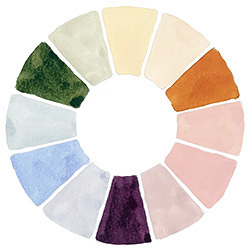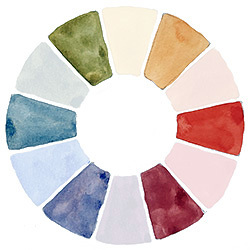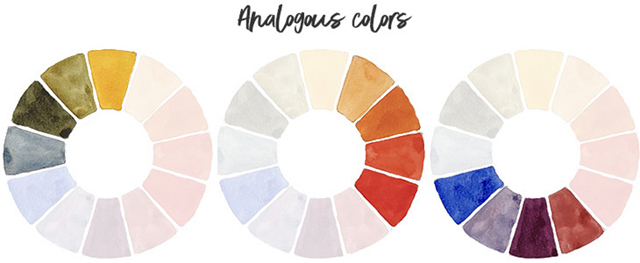Primary Colors
- Yellow
- Red
- Blue

Secondary Colors
- Orange
- Purple
- Green

Tertiary Colors
- Yellow-orange
- Red-orange
- Red-purple
- Blue-purple
- Blue-green
- Yellow-green

Creating a Color Wheel in Watercolor |
The foundation of the traditional painter's color wheel is the primary color triad. These are located at equal distances around the wheel with yellow at the top. Each primary color is initially separated from the other two by 3 blank slots. The primary colors cannot be mixed from any other combination of colors and are the foundation of your watercolor palette. Secondary colors are achieved by mixing one primary color with another in equal amounts. For example 50% yellow and 50% red = orange. There are 3 secondary colors on the color wheel, located in slots positioned exactly halfway between their parent colors. Tertiary colors are created by mixing a primary color with an adjacent secondary color. So for example yellow mixed with orange = yellow-orange. There are a total of 6 tertiary colors on the color wheel, all located in the gaps between the primary and secondary colors. The naming convention for tertiary colors always begins with the primary color name + the secondary color name. |
Primary Colors
|
 |
Secondary Colors
|
 |
Tertiary Colors
|
 |
Colors that are directly opposite each other on the color wheel are known as |
Colors that sit side by side to each other on the color wheel create a color harmony known as analogous colors. These color hues are very close and together they create smooth and calming combinations. Use of analogous colors will establish and reinforce a mood. |
|
 |